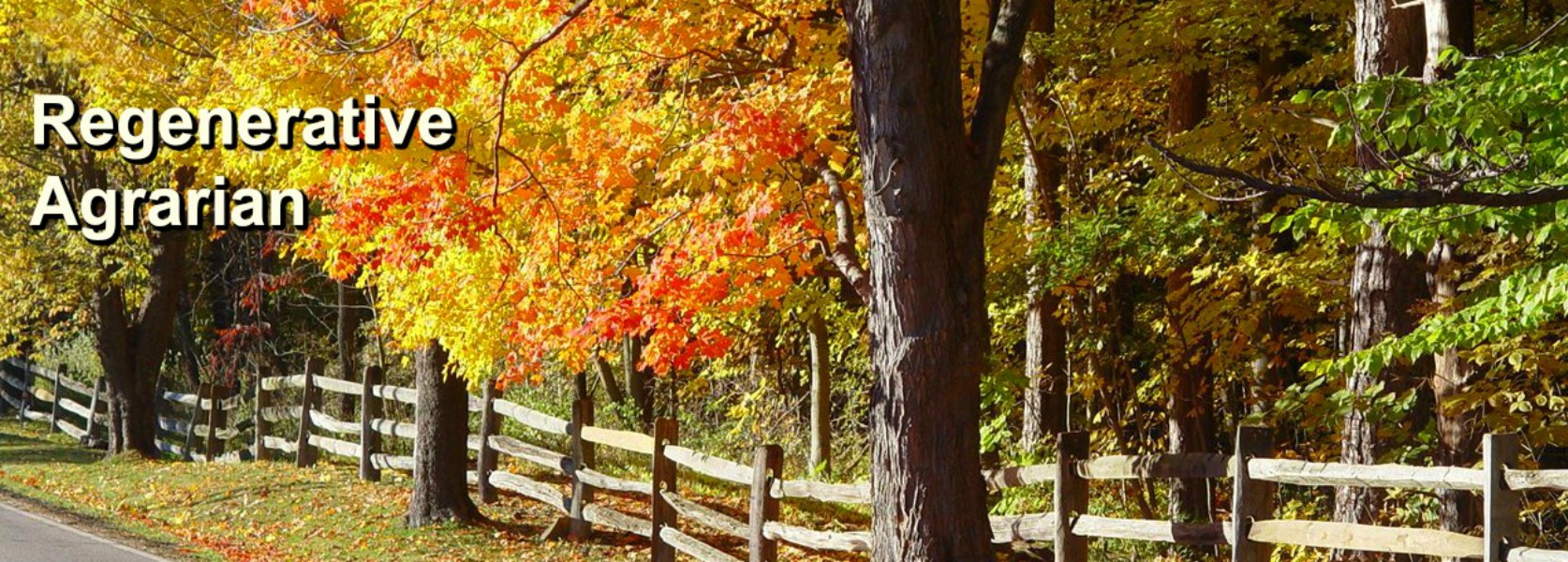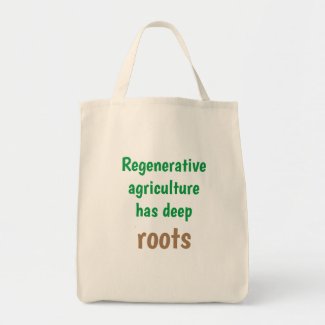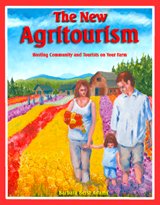Tagasaste: A possible drought resistant green fodder plant?
Copyright National Lilac Publishing, LLC. A version of this article by Barbara Berst Adams first appeared in AcresUSA
As USA eco-farmers continue innovating ways to adapt to drought and climate change, one of the resources they sometimes turn to are permaculturists and eco-farmers in Australia. Various methods to thrive during droughts have come from the farmers on this continent which has many expanses of desert and semi-arid land.
Also,
with the growing popularity of farmed products from animals fed live
greens for as much of the year as possible, even farmers still in stable
temperate zones with adequate year-round precipitation may be looking
for ways to feed live, growing green plants during their normal dry
summer season.
One of those methods being considered by some is through the use of an interesting fodder crop called Tagasaste, popular in various dry, warm locations in the world including with some Australian permaculturists. Native to the Canary Islands, it was eventually brought to New Zealand as a hedge crop, according to the New Zealand Tree Crops Association (NZTCA). Believed to have been brought to New Zealand and Australia in 1879 and eventually naturalized there, growers around the globe are considering Tagasaste as a drought-proof green fodder plant. Its longer term successful use is appearing in Australia, New Zealand, South Africa and as we’ll see below, on an organic farm in California. There are some cautions, though, as we'll also discuss below.
Also called tree lucerne, Tagasaste (Chamaecytisus palmensis) is a perennial evergreen tree or shrub utilized, among various uses, as a drought resistant, quickly rebounding green fodder crop for grazing and browsing livestock including sheep, goats, cattle, pigs and poultry. Deer and other wild animals like it as well. It’s described by the Australian publication, “Tropical Forages,” as “perennial, evergreen, hardy, unarmed tree, five to six meters in height with a crown diameter of a similar size. It has long drooping softly-hairy, leafy branches. Leaves dull, bluish-green, trifoliate.”
Its roots can reach to more than 32 feet down, explaining its immense drought tolerance. On farms, it can be planted in hedges, used in alley cropping or other fodder producing methods. It’s usually either cut and delivered to livestock, or carefully direct grazed, helping to keep animals fed or at least supplemented with live greens during long dry seasons and even in areas of ongoing year-round severe drought. It allows farmers to be less dependent on outside food sources while supplying live green growing fodder from a relatively small space.
Its other uses include its profuse blossoms as a bee crop, its nitrogen fixing ability, and use as firewood from older, larger trees, which can be coppiced. Use of its seedpods as a livestock food source has also been suggested, although further information wasn’t found at this writing except for its popularity with chickens which eat the hard seeds which are ground within their chicken crops. Well managed trees are believed to live for up to 30 years.
According to Farmer’s Weekly, a publication based in South Africa which covers much of the southern African continent, Tagasaste was grown commercially in South Africa in the 1980s by a farmer named Gavin Armstrong. Now joined by his daughter, Leah Armstrong, he is known to be devoted to sustainability and his opinions are trusted. Tagasaste is described by Farmer’s Weekly, which interviewed Gavin Armstrong, as potentially “marvelous but not miraculous.” In the article authored by Denene Erasmus, farmers are warned by Armstrong himself that growing interest in the crop can be causing claims of exaggerated crop benefits (such as that it lives far longer than it actually does, or grows well in unsuitable climates, for example) along with inflated prices and sales of inferior seeds and seedlings.
And what farmer doesn’t know how some agriculture salespeople touting “the next greatest thing” in farming’s past have doomed trusting farmers into purchases that didn’t pan out, or even caused harm? So in this age of drought problems along with greater demand for live-green fed farm products, over eager salespeople in the USA may eventually start circling the crop of Tagasaste for future sales. Therefore, for those in drought prone areas or even for those who want another source of seasonal green feed or forage, this article covers some of the pros and cons discovered so far by those who are either already using it or have been watching it closely.
Tagasaste in Northern California
This fast-growing legume crop is currently being used successfully on Redwood Hill Farm and Creamery of Sebastopol, California, which raises goats to produce a variety of dairy products including kefir and yogurt. Among many sustainable practices, this farm has an extensive water conservation and water reclamation program. Solar power provides 100% of the energy needs for the goat dairy farm. Solar also covers 85% of the power needed for its cheese and dairy producing facility. So naturally, when a farm such as this has found success with Tagasaste, it can be of interest to take notice.
In the case of Redwood Hill Farm, the eventual full time growing of Tagasaste had a start and stop beginning.
“I read an article about Tagasaste many years ago, probably sometime in the late 80s,” said Jennifer Bice, owner and operator of Redwood Hill Farm. We started growing it then, but we only had a very small space to do so and the crop amounted to just a few plants. We saw that the goats liked it, but we didn’t have enough space to make it worth growing for feed. We always wanted to grow Tagasaste again, because the goats liked it so much.
“Initially, our goal was to provide the goats with an alternative browse,” she continued, “and also to have feed on our own land in case of an emergency. The plant provides a high-protein feed and grows really well in our Mediterranean climate. As the California drought persisted, feed prices shot up and it made a lot of sense to give it another try, especially because Tagasaste is so drought-tolerant.”
And so, Tagasaste was once again introduced to the farm’s overall plan. The farm’s manager, Scott Bice, started again with a half acre trial of Tagasaste planted in an open area of the farm’s apple orchard, and the farm workers are now regularly harvesting greens for the goats seven to eight months a year. Though the plant is an evergreen with potential year-round harvestability, the northern California winter climate can cool off substantially and has lower light that time of year, so the growth of Tagasaste there slows down and it’s left alone to regenerate during that time. During the harvesting season, the trees are cut down just to four feet then allowed to regrow.
Growing Tagasaste
From sources we've found so far, Tagasaste thrives in light well-drained sandy soils and does very well on slopes and hillsides. It also grows well in gravel situations, and in loam, limestone and laterites. Its wide pH adaptability ranges between 4.0 and 8.5, but it does better closer to the acid range, and can’t tolerate saline soil.Its dense, deep and fibrous root systems can benefit sloped areas with erosion issues, while the plant itself benefits from the good drainage provided by the sloping land. Though there are growers who report growing Tagasaste well in relatively higher rainfall areas, poor drainage can cause root rot, according to the NZTCA. Damping off of young plants has also been reported with too much humidity and poor drainage.
Though relatively simple to grow once its needs are met, Tagasaste has specific needs for getting its growth started and well established on a farm. The younger plants can need more protection and watering at first. “The first round of planting consisted of about thirty to forty plants,” said Scott Bice. “The seed is hard to germinate because it requires scarification. The easiest way to do this with Tagasaste seeds is to bring water to a boil, then turn it off and soak the seeds overnight.“At first I planted Tagasaste in one-gallon pots with our very rich, heavy goat manure. They did not like that, because it didn’t drain very well and I lost many to root rot. It’s important to know that these plants don’t like too much moisture and need very good drainage. I then transferred them to our field, and there, they were able to survive. That was our original crop about five years ago and it takes a plant two to three years to be well established. We collected seeds and germinated our own with good success, and now, we have well over 100 plants in the ground.”
Another Tagasaste grower who posted on the permaculture website and forum, permie.com, described a similar way to start the seeds. In this case, the seeds were successfully sprouted after pouring a cup of boiled water over them, but letting them sit for only five to six minutes, then draining. (Note, the water isn’t continuing to boil during the treatment session. It’s preboiled, then poured over the seeds.)Being a nitrogen fixer, Tagasaste seedlings are believed to grow best when inoculated with mycorrhiza and rhizobia. Some professional growers inoculate with the natural beneficial microorganisms taken directly from around the parent plants in the nursery or in the wild. But several years ago, one grower in Florida who obtained seeds by mail and had no mature trees for this purpose, but obtained planting instructions stating to use commercially available soybean/cowpea inoculant.
Variations in Tagasaste are starting to show up as interest in the plant spreads to various continents. One New Zealand nursery, for example, offers the more usual varieties that grow upright as well as a natural variation that grows in a weeping, horizontal manner. The plant can be encouraged to produce many smaller stems rather than larger branches by pruning it down while it’s young, during the time it’s getting established.Ideal climates
As stated, Redwood Hill Farm is situated in a dry northern California climate. While it is described as frost tolerant and may grow further north as a bee plant or for other purposes, it may not rebound fast enough for fodder if grown too far north. According to a cooperative extension program publication from Alabama’s Tuskegee University and Southern S.A.R.E. (Sustainable Agriculture Research and Education), “Tagasaste, or tree lucerne (Chamaecytisus palmensis), has been utilized in Australia as a browse species, but may not survive below 15 degrees F.” This publication was concerning year-round grazing plant species for goats.Possible invasiveness issues
Any newly introduced plant, especially a fast growing one with very deep roots, needs to have its potential invasiveness considered. For instance, even in areas where olive trees have been introduced to go on to produce strong agricultural olive regions, there have been sideline issues with olive trees naturalizing and pushing out original plant species.Opinions on Tagasaste’s possible invasiveness have varied. The previously mentioned Tropical Forages: An Interactive Selection Tool (TF) is a collaborative project between several environment and agricultural research entities in Australia. According to their fact sheet on Tagasaste, the plant’s potential to become a pasture weed appears to be relatively low because the hard seeds can take years to germinate, and any young seedlings that do sprout are readily eaten by domestic and wild animals. At this writing, there was no mention that Tagasaste reproduces by any means other than seeds, such as an underground spreading system.
However, the same TF fact sheet states that Tagasaste has in fact naturalized in areas along roadsides and bushland where it has been planted, and that in a wide range of landscapes such as disturbed humid areas it has moved in and become an invader. Also, any easily rebounding plant with such exceptionally deep roots could cause difficulty in removing or in allowing other native plants to move back in, if such a plant does become well established.Another northern California grower who posts on the permie.com forum purchased seeds of Tagasaste years ago when he lived in a different state, but once he moved to northern California, he planted three plants, two of which are still thriving. He shared the following, “The one (Tagasaste plant) that seems to be happiest is actually in the partial shade of an oak. They don't really appreciate our occasional freezes (12-15 degrees F. once or twice most winters) but they've been growing out with a bit of dieback and so are gradually increasing in size, and last spring I saw a few flowers. But it sure doesn't seem to be behaving like an aggressive coppicing shrub that I would want to slash back on a regular basis for animal (feed).”
When asked about his thoughts on the plant’s ability to become invasive, he shared the following, “I would think that in my particular ecosystem its invasive potential is practically nil, unless it gets into riparian areas. I think the young seedlings would require more moisture to recruit to a drought-tolerant size than what occurs here most years. And severe winters kill the plants back as well. California is a land of microclimates and niches, though, and I wouldn't extend my convictions very far. Especially closer to the coast where winters are milder and summers often foggy, it might be very different… these areas also seem to harbor more dispersive exotics.”Scott Bice of Redwood Hill Farm stated a similar opinion. “Our farm is located in Sonoma County in Northern California,” he said. “It is one of the few areas in the world with a Mediterranean climate, and spreading of Tagasaste does not seem an issue in this climate pattern. The plant is native to the Canary Islands, which also have a Mediterranean climate. Spreading could be an issue in places with warm summer rains. Tagasaste grows very quickly during the warm months,” Scott Bice said, “but we can control (its fast growth) through our watering system as our warm months are also very dry. The more water it gets, the more it grows. I could imagine that plants like this could be invasive in warm, wet climates.”
Finding seed
Tagasaste seed availability in the USA has been hard to come by for the past several years. “We purchased the first batch of seeds online,” said Scott Bice, “and they were imported from France. We were not able to trace back the source, as this was more than five years ago. Subsequently, I saved seed at the farm and replanted the Tagasaste until it was well-established.”
The grower who planted three trees and posted on permie.com also stated that, though it was long ago, he believed he may have purchased his Tagasaste seeds from J.L. Hudson, Seedsman, based in La Honda, California. J.L. Hudson is a public access seed bank established in 1911. Now going on its 105th year, a current search of its offerings didn’t show availability of Tagasaste. However, upon inquiring about Tagasaste directly, J.L. Hudson replied, “We hope to get this in the next year - we haven't had it for years because of the restrictions on getting seed in from Australia these days, but are planning a good-sized import from there sometime this year.”In summary, as Tagasaste makes its way to the USA, some of the claims for this plant’s benefits may be very true if grown within specific climates, while one would want to check into possible invasiveness and proceed with caution regarding exaggerated benefits for sales purposes. So the first thing farmers can do when deciding whether to even consider this plant now or in the future is to determine if the farm’s climate would fulfill the plant’s climate needs as a fodder crop. Too cool of an area may still allow it to grow, but not rebound as fast as one would like after cutting or grazing for an abundant supply of ongoing livestock greens. Too humid and warm may allow invasiveness. It appears suggested so far (yet only suggested) that long enough spells of dry and warm -- whether that’s the farm’s year-round climate or its long-enough summer climate -- may be the closest combinations to allowing Tagasaste to be grown as valuable, cost-effective green fodder.
Still, information about its growth, benefits and invasiveness in various USA climates is currently sparse though expanding, so growers can keep an eye out for new studies and observations without over planting or moving too fast to bring this plant to the farm. USA permaculturist forums or publications may be useful for that. Unless local extension services or other information sources deem it invasive in a farmer’s climate, though, one advantage of Tagasaste is that it can be relatively inexpensive and uncomplicated to experiment with just a handful of seeds planted to see how they produce before making a larger investment. From there, one could better decide if Tagasaste is best left to other growers around the world, or if it will in fact become one more tool in the eco-farmer’s adjustment to climate change and/or growing demand for crops from farm animals that eat live greens as much of the year as possible.
The four minute video below shows tagasaste growing as tree size in a regenerative pasture system in Australia. And also that it creates seed food for chickens (chooks.) As we've seen, it can also be used as green fodder when kept at shrub size.







